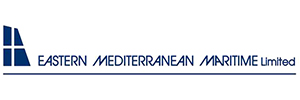Dryad Global has issued a maritime security update, highlighting a volatile regional security landscape marked by military escalation, electronic interference and increased risks to commercial vessels in the Arabian Gulf, Strait of Hormuz, Gulf of Oman and Northern Arabian Sea.
According to Dryad Global, as of mid-June 2025, escalating hostilities between Iran and Israel have led to a sharp increase in maritime security threats across key trade arteries in the Middle East.
Regional security threats escalate
On 14 June, Iran issued a stark warning that it would retaliate against U.S., UK, and French forces should they intervene in its conflict with Israel. This was followed by preparations for diplomatic evacuations in Iraq and the withdrawal of nonessential Western personnel from Bahrain and Kuwait, signalling just how rapidly the situation could deteriorate.
The Joint Maritime Information Center (JMIC) and UK Maritime Trade Operations (UKMTO) have raised the threat level for commercial shipping to SIGNIFICANT, citing concerns over direct and proxy attacks, as well as electronic warfare tactics like GPS jamming and AIS spoofing, particularly around Bandar Abbas.
Shipping patterns and risk indicators
Although the Strait of Hormuz remains open, traffic has declined dramatically. Transits of cargo-carrying vessels dropped from 147 on 9 June to just 111 by 15 June, an indication that shipowners are adopting a more cautious approach amid rising geopolitical risks, Dryad Global explained.
There have been no direct attacks on commercial vessels to date, but the threat profile includes a broad spectrum of potential tactics:
- Drone and missile strikes
- Limpet and floating mines
- Swarm attacks by IRGCN fast craft
- Opportunistic vessel seizures
Particularly vulnerable are vessels with perceived affiliations to the U.S., UK, France, or Israel, where misidentification could be catastrophic, especially in high-traffic areas with disrupted AIS visibility such as the waters north of Dubai and Sharjah.
Potential Red Sea spillover
While Iran’s direct reach into the eastern Mediterranean remains limited, proxy actors such as Houthi forces in the Red Sea may widen the conflict. Drawing from their attacks on over 55 vessels since November 2023, any spillover could include targeted disruptions at strategic chokepoints like the Bab el-Mandeb Strait.
According to Dryad Global, in the coming weeks, the breakdown of nuclear negotiations and Iran’s non-compliance with IAEA inspections could trigger further Israeli strikes, intensifying maritime risk in a region already on edge.
Guidance for commercial operators
Dryad Global urges commercial operators to maintain heightened awareness and adopt the following best practices:
- Avoid disabling AIS to reduce risks of collision and mistaken identity.
- Use radar, gyro compass, and visual fixes to counter GPS jamming.
- Adhere to MSTC-ME routes, which benefit from coalition naval oversight.
- Conduct thorough pre-voyage risk assessments with attention to ownership links to Western nations.
- Register with UKMTO and NAVCENT NCAGS before entering the Indian Ocean Voluntary Reporting Area.
- Maintain constant communication with UKMTO and MSCIO and participate in voluntary reporting schemes.
- Implement contingency planning covering crew welfare, rerouting, emergency response, and vessel speed adjustments.
- Maintain vigilant lookouts for UAVs, floating mines, and fast-approaching craft.

































































